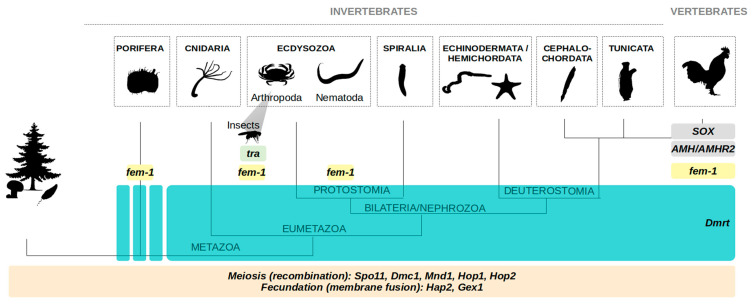Figure 2.
Conservation of key players of sexual reproduction and of the sexual differentiation pathways. Meiosis-specific genes (in beige) are present across most eukaryotic lineages: Spo11, Dmc1, Mnd1, Hop1 and Hop2 are involved in the recombination process. Hap2 and Gex1 (also in beige) are, respectively, involved in cell and nuclear fusion, and are also shared by most eukaryotes. Found throughout Eumetazoa (in blue-green), the Dmrt gene family is widely involved in the sex determination/differentiation cascade. It was also described in some other Metazoa from the Porifera phylum but its role has to be investigated (dashed blue-green square). The fem-1 (feminizer) gene is linked to the regulatory cascade of Dmrt in Nematoda and Arthropoda but it has also homologs—without defined function to date—in distant phyla such as Porifera or vertebrates (in yellow). More specifically, but ubiquitously in insects, tra (transformer, in light green) has been described as the key regulator of Dmrt sex-specific splicing. Other conserved molecular players in vertebrates are SOX (SRY-related HMG-box), and AMH (anti-Müllerian hormone) and its receptor (AMHR2) as upstream and downstream effectors respectively (in grey).

